Come to the Green Side, we Have Trees!
Come to the Green Side, we Have Trees!
Our sustainable forest projects in Sierra Leone / West Africa offer the perfect mix for anyone who wants to take on ecological and social responsibility on this planet.
We are planting a new rainforest of native trees, diverse and species-rich. Each individual tree is much more than the sum of its leaves, branches and roots: each tree provides shade and hope, medicine and food, water, air and much more.
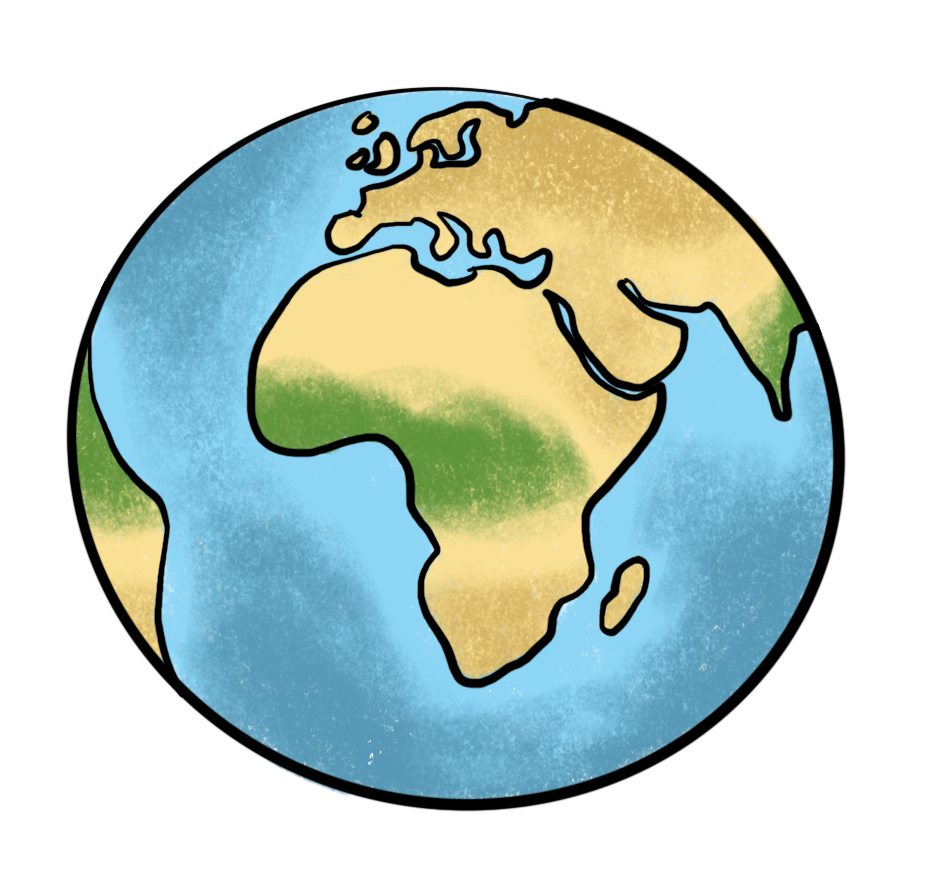
Our Green Lung
Our Green Lung
The green lungs of our planet are essential for the balance of our sensitive climate. This green lung doesn’t just include the Amazon, this green belt stretches around the entire planet – and our new rainforest is right in the middle of it.
Of course, planting only takes place where there was already rainforest, leaving enough land for the local people to expand their villages and extend their farmland.
Biodiversity is crucial
Biodiversity is crucial

We plant a healthy mixed forest of more than 30 local tree species. No monocultures. Never. Tree diversity also means a diversity of other plants and animals. Biodiversity is not an end in itself, it is essential for all life in the forest and ultimately also protects the forest itself against pests.
No Future Without Strong Women
No Future Without Strong Women
Strong women are the key to sustainable development. It is women like Saio who take care of the family, the children and their future. And they are the ones who take responsibility for our new forests. Of course, committed men also work for greenlimba, but for us the time of the logging patriarchy is over.
Protection of Endangered Tree Species
Protection of Endangered Tree Species
These seeds belong to the “Afzelia Africana”, a tree species classified as endangered on the “Red List”. By propagating them in our tree nurseries, we protect many of these endangered species from extinction, including important medicinal trees. Of course, we only plant tree species native to West Africa; invasive neophytes from other continents do not come to our nurseries.
Clever Farmers
Clever Farmers
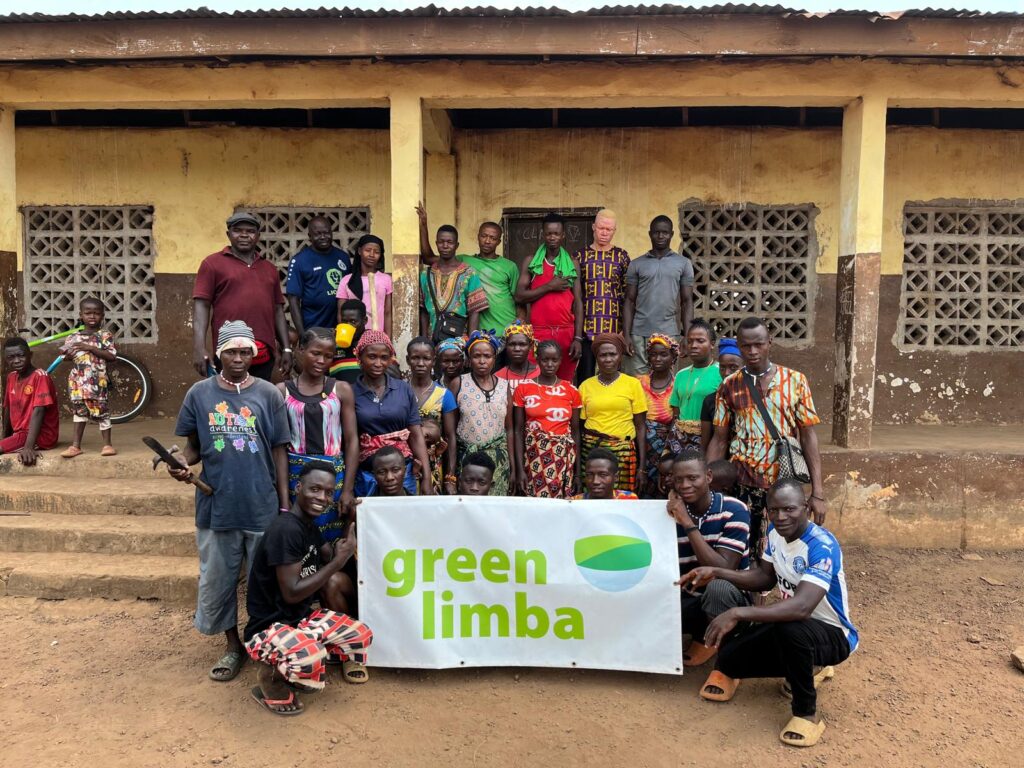
In addition to charcoal production, ineffective agriculture is the main reason for deforestation in West Africa. We train farmers in permaculture techniques for better yields. This helps to fill hungry bellies, generate income, minimize land consumption and thus protect remaining rainforests.
The Giants of the Forest
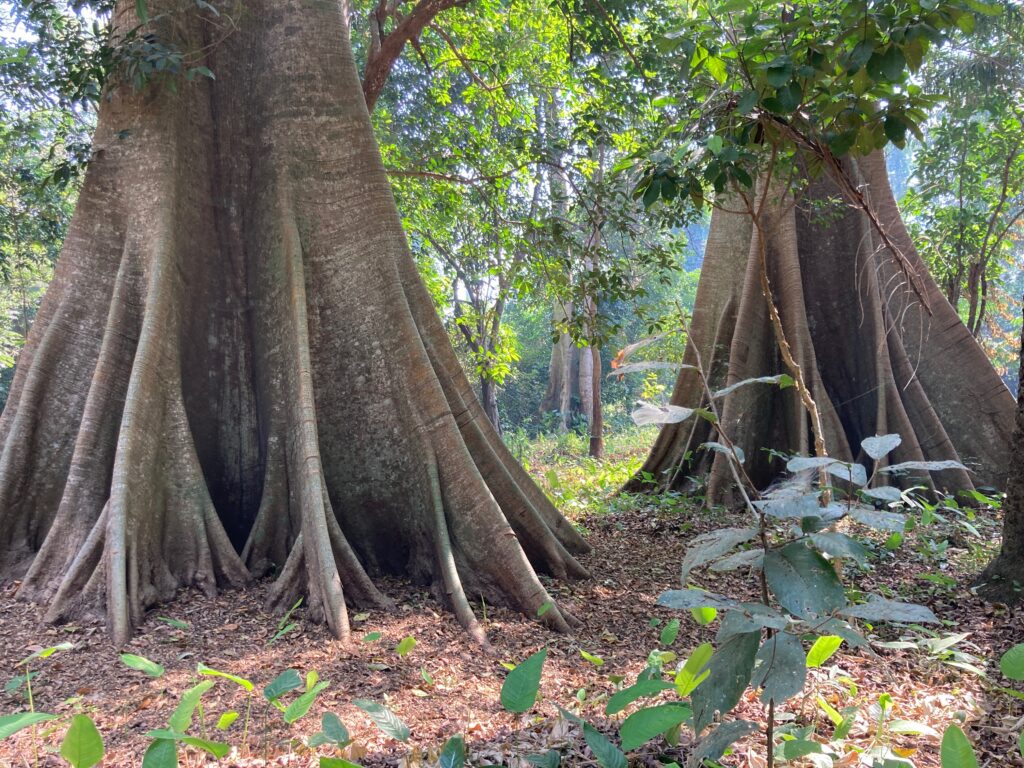
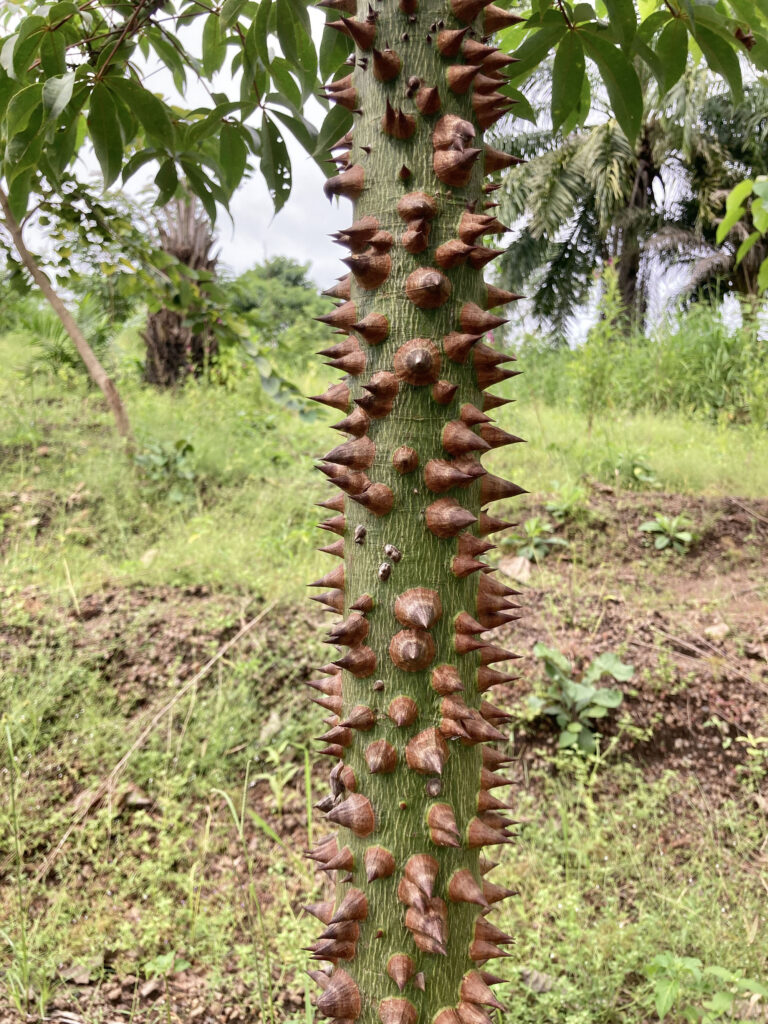
The Giants of the Forest
The Cotton Tree (Ceiba pentandra) is one of the giants of the rainforest, more than 40 meters high! With its impressive board roots, it is one of the most imposing representatives of its genus. And it is already impressive as a small kapok: its young trunk is covered with really sharp spines, making it a strong pioneer plant. Its life expectancy is ultimately several hundred years.
3 x pro West Africa
3 x pro West Africa

The growing season in West Africa is almost twice as long as in Central Europe. As there is no winter here, the trees grow faster and store CO2 more quickly. This means faster results in the fight against global climate change.

West Africa offers a lot of unused space for reforestation. In much more densely populated Central Europe, there is nowhere near as much fallow land available as here.

In addition to friendliness and joie de vivre, West Africa is unfortunately also characterized by poverty. There are no funds available for the necessary adaptations to the climate change caused by the global North. We also help to achieve a little more justice.
Exotic Wildlife
Exotic Wildlife
With the diversity of the trees, the animal world is also moving back in with all its diversity, from insects and bats to reptiles, birds and mammals. The children here no longer know the animals. The lively and sociable western green monkey (Chlorocebus sabaeus) is one of the first monkeys to return to the new forests.
A Matter of Conviction
A Matter of Conviction
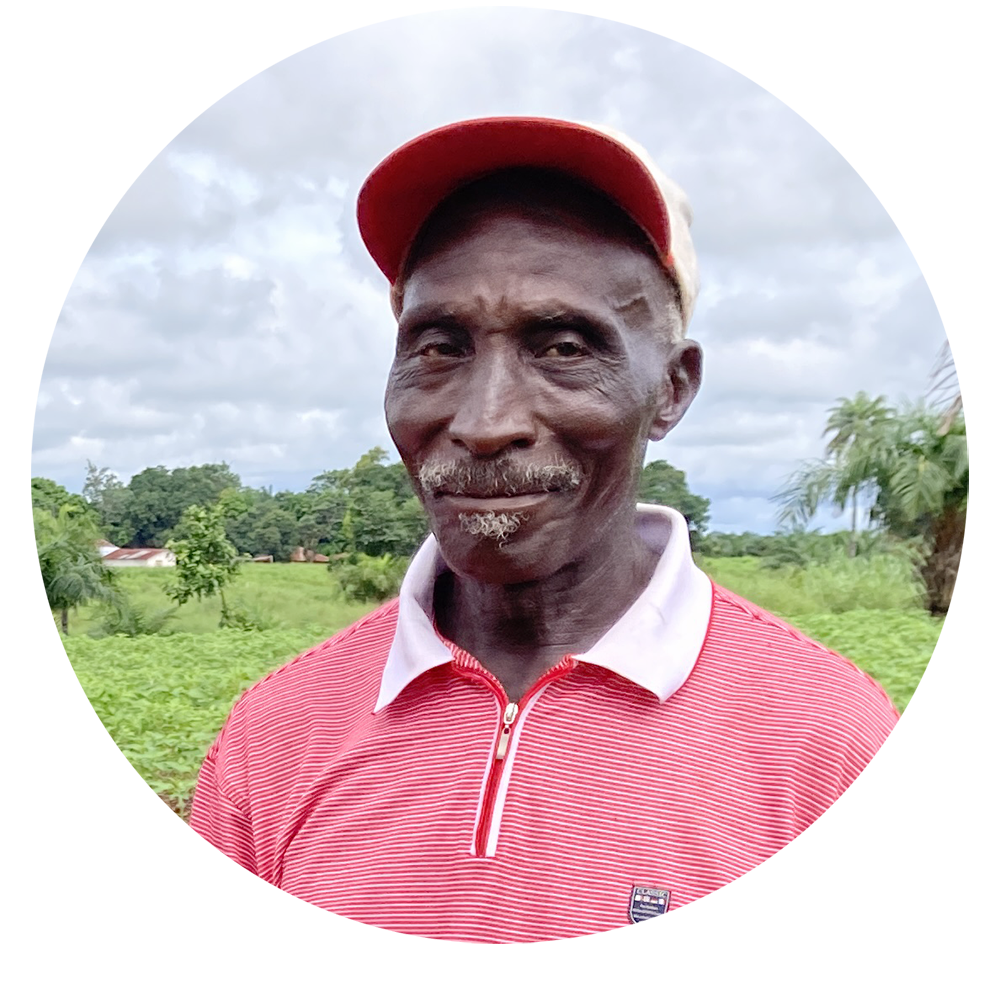
Abu White is 73 years old and has been with us from day one. With the utmost conviction. He still remembers well what the landscape around Kasimbek looked like 30 years ago, with large rainforests and numerous hordes of monkeys that regularly crossed the village road. He would like that back, also for his grandchildren and great-grandchildren.
Abu White is 73 years old and has been with us from day one. With the utmost conviction. He still remembers well what the landscape around Kasimbek looked like 30 years ago, with large rainforests and numerous hordes of monkeys that regularly crossed the village road. He would like that back, also for his grandchildren and great-grandchildren.

With the People
With the People

There are regions in Africa where the people living there are being driven out by force of arms in order to protect the rainforest. With support from Europe. We reject that. We are shaping the future with local people, we are partners in the fight against climate change. That’s why we say “Kushe”, “Seke” and “Uwaly” depending on the region, instead of just “Hello”.
(English is the official language in Sierra Leone, but in the villages people speak Krio, Temne, Limba – and 20 more languages).
20% Fruit Trees
20% Fruit Trees
In addition to the protected mixed forest, we plant 20% of useful and fruit trees on our reforestation areas. The cashew tree is currently very popular here, but mangoes, oranges, limes and tamarinds are also planted on these areas for the good and direct benefit of the community. Timber extraction, on the other hand, is strictly prohibited in our forests.
Ensuring Important Medical Resources
Ensuring Important Medical Resources
A large proportion of the trees we plant also have medicinal significance for the indigenous population. The trees therefore also preserve traditional medical knowledge. People in the rest of the world also benefit from this: 25% of medicines in the global North come from rainforest plants.
Money, Money, Money!
Money, Money, Money!
Climate protection and climate justice do not come for free. We pay our employees fair salaries and the villages involved receive compensation for lost profits from logging (so-called “Payments for Environmental Services”) for the protection of our rainforests. The first community is currently using this money to build a second village school building. The funds provided by greenlimba are really helping in one of the poorest countries in the world. And we are also combating the causes of flight.
